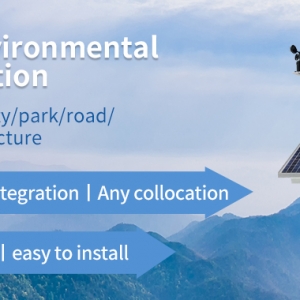The agriculture industry faces significant challenges due to climate change, resource depletion, and population growth. To meet these challenges, farmers need to adopt innovative approaches that improve productivity, reduce waste, and ensure sustainable practices. One such approach is smart farming, which involves using advanced technologies such as sensors, IoT, and AI to optimize crop production and minimize environmental impact. Soil sensors are one of the key components of smart farming, as they provide critical data on soil health, moisture levels, and nutrient content. In this article, we will explore the importance of soil sensors in revolutionizing agriculture and discuss their applications in different sectors.

Understanding Soil Sensors:
Soil sensors are electronic devices designed to measure various parameters of soil conditions such as moisture content, temperature, pH, salinity, and nutrient levels. They work based on various principles such as resistive, capacitive, and spectral sensing. Soil sensors consist of a sensing element, which interacts with the soil, and a transducer that converts the detected signal into an electrical output. The output can be analyzed to determine soil health, moisture stress, nutrient deficiencies, and other critical factors affecting crop growth.
Benefits of Soil Sensors in Smart Farming:
Precision Farming: Soil sensors enable precision farming by providing real-time information on soil conditions. This information helps farmers optimize crop growth, reduce water consumption, and minimize fertilizer use. By accurately measuring soil moisture, farmers can adjust irrigation schedules to avoid waterlogging or drought stress. Similarly, by monitoring nutrient levels, farmers can apply fertilizers only where needed, reducing waste and environmental impact.
Early Warning Systems:
Soil sensors can contribute to the development of early warning systems for crop diseases, pests, and other stress factors. By continuously monitoring soil conditions, any sudden changes or anomalies can trigger alerts, enabling farmers to take immediate actions and prevent crop losses. This proactive approach can help reduce the use of pesticides and other harmful chemicals, improving both environmental and human health.
Resource Efficiency:
Soil sensors help farmers optimize resource use by reducing water and fertilizer waste. By measuring soil moisture levels and nutrient content, farmers can adjust irrigation and fertilization schedules to ensure that plants receive just the right amount of resources. This reduces waste and improves resource efficiency, leading to cost savings and environmental benefits.
Improved Crop Yield and Quality:
By providing real-time data on soil conditions, soil sensors enable farmers to make informed decisions about crop management. This leads to improved crop yield and quality, as farmers can adjust their practices to optimize growth conditions. For example, by monitoring soil moisture levels, farmers can avoid water stress, leading to improved plant growth and higher yields.
Applications of Soil Sensors in Smart Farming:
Precision Irrigation: Soil sensors are extensively used in precision irrigation systems, which deliver water directly to the roots of plants based on soil moisture levels. This approach avoids overwatering or underwatering, ensuring that plants receive just the right amount of water for optimal growth. This saves water and reduces energy consumption, leading to cost savings and environmental benefits.
Nutrient Management:
Soil sensors play a vital role in managing soil nutrients, as they enable farmers to measure the levels of essential nutrients such as nitrogen, phosphorus, and potassium. By monitoring these levels, farmers can adjust their fertilizer application rates to avoid nutrient deficiencies or excesses, leading to improved crop growth and quality.
Disease and Pest Management:
Soil sensors can contribute to disease and pest management by detecting changes in soil conditions that indicate stress or infestation. By monitoring soil moisture and nutrient levels, farmers can identify potential disease or pest problems early and take preventive measures. This reduces the need for harmful pesticides and fungicides, leading to environmental benefits.
Climate Change Adaptation:
Soil sensors can help farmers adapt to the effects of climate change by providing real-time data on soil conditions. As climate patterns become more unpredictable, farmers need to adjust their practices to avoid crop losses or reduce environmental impact. By monitoring soil moisture, temperature, and other parameters, farmers can make informed decisions about crop management and adjust their practices to adapt to changing conditions.
Challenges and Future Developments:
While soil sensors have significant potential for revolutionizing agriculture, several challenges still need to be addressed:
Sensor Calibration and Maintenance:
Soil sensors require regular calibration and maintenance to ensure accurate and reliable measurements. Calibration is necessary to account for changes in sensor performance over time and variations in soil types and conditions. Proper maintenance practices are crucial to prevent sensor drift, fouling, or contamination, which can affect the accuracy of measurements.
Sensor Interference and Cross-sensitivity:
Soil sensors can be prone to interference from other factors, such as temperature, humidity, or electromagnetic noise. Cross-sensitivity to different soil properties can also affect the accuracy of measurements. Developing sensor technologies with improved selectivity and reduced interference is essential for reliable soil sensing.
Data Management and Integration:
Managing and analyzing large volumes of data generated by soil sensors can be a complex task. Efficient data management systems and integration with other technologies, such as data analytics, AI, and IoT, are crucial for effective decision-making and optimizing crop management practices.
Cost and Accessibility: The cost and accessibility of soil sensors can be a barrier to adoption, particularly in developing countries or small-scale farming operations. Developing more affordable and user-friendly sensors is essential for expanding the coverage of smart farming practices.
Conclusion:

土壤传感器是智能农业的重要组成部分,具有许多优势,例如精准农业、早期预警系统、资源效率以及提高作物产量和质量。土壤传感器可用于精确灌溉、养分管理、病虫害管理以及气候变化适应。然而,要广泛采用土壤传感器,需要解决与传感器校准、维护、干扰和数据管理相关的挑战。通过持续的研究、创新和合作,土壤传感器可以为农业革命、改善粮食安全和促进可持续发展做出重大贡献。






